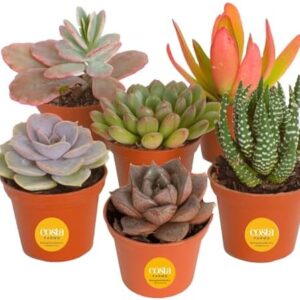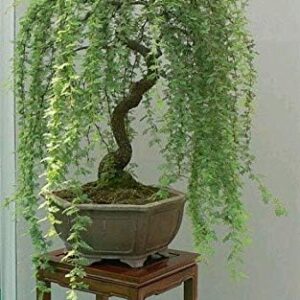Succulents are all the rage right now in the world of indoor gardening. These little plants are not only adorable and easy to care for, but they also come in a wide variety of shapes, sizes, and colors, making them the perfect addition to any indoor garden. Whether you’re a seasoned gardener looking to add some new green friends to your collection or a beginner just starting out, there are a few key tips to keep in mind when it comes to caring for succulents.
First and foremost, it’s important to understand that succulents are desert plants, which means they require very little water to thrive. In fact, overwatering is one of the most common mistakes people make when caring for succulents. Unlike most plants, succulents store water in their leaves, stems, and roots, allowing them to withstand long periods of drought. This means that you only need to water your succulents sparingly – about once every two weeks should be sufficient, depending on the climate you live in.
When watering your succulents, it’s best to do so in the morning so that any excess moisture has a chance to evaporate throughout the day. Be sure to water the soil directly at the base of the plant, rather than spraying water on the leaves, as this can cause rot and other issues. Additionally, it’s important to use well-draining soil specifically designed for succulents and cacti to prevent root rot and ensure proper drainage.
In terms of lighting, succulents thrive in bright, indirect sunlight. While they can tolerate some shade, they won’t do well in low-light conditions. It’s best to place your succulents near a south-facing window where they can soak up plenty of sunshine throughout the day. If you notice your succulents starting to stretch or lean towards the light, it’s a sign that they need more sunlight. Rotating your plants every so often can help ensure they receive adequate light on all sides.
Temperature is another important factor to consider when caring for succulents. Most succulents prefer temperatures between 60-80 degrees Fahrenheit, making them ideal houseplants. However, they can also tolerate cooler temperatures if necessary, as long as they are kept above freezing. Avoid placing your succulents near drafts or in extremely hot or cold areas, as this can stress the plants and lead to health issues.
In terms of feeding, succulents do not require frequent fertilization like other plants. In fact, too much fertilizer can actually harm them. It’s best to use a balanced, water-soluble fertilizer diluted to half strength and apply it sparingly during the growing season (spring and summer) – about once a month should be sufficient. Be sure to avoid feeding your succulents during the dormant season (fall and winter) when they are not actively growing.
When it comes to repotting, succulents only need to be repotted every 1-2 years, or when they have outgrown their current container. When repotting, be sure to use a pot that has drainage holes to prevent water from pooling at the bottom and causing root rot. Gently remove the plant from its current container, shake off any excess soil, and replant it in a slightly larger pot with fresh succulent soil. Allow the plant to settle in for a few days before resuming normal watering and care routines.
One of the best things about succulents is their ability to propagate and grow new plants from existing ones. There are several methods for propagating succulents, including leaf cuttings, stem cuttings, and division. Leaf cuttings involve removing a healthy leaf from the plant, allowing it to callus over for a few days, and then planting it in soil to root and grow into a new plant. Stem cuttings involve cutting a healthy stem from the plant, allowing it to callus over, and then planting it in soil to root and grow. Division involves separating a clump of succulents into individual plants and replanting them in separate containers. Whichever method you choose, propagating succulents is a fun and rewarding way to expand your indoor garden.
In conclusion, caring for succulents is a relatively easy and rewarding endeavor that can add a touch of nature to your indoor space. By following these tips and guidelines, you can ensure that your succulents remain happy and healthy year-round. Remember to water sparingly, provide plenty of sunlight, maintain proper temperature and humidity levels, and avoid overfeeding and overhandling your plants. With a little bit of love and attention, your succulents will thrive and bring beauty and joy to your home for years to come.






